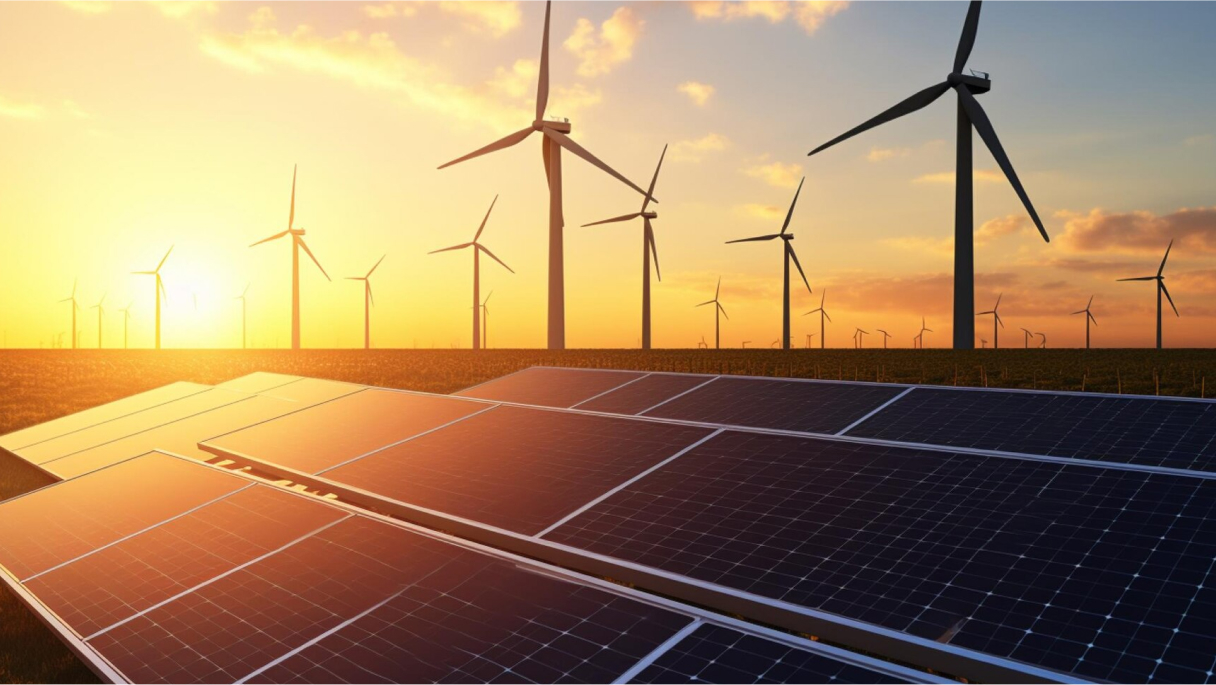A lot is asked about the procedure and the necessary requirements for obtaining an authorization grant from the National Electric Energy Agency (ANEEL) for the exploration and installation of wind and photovoltaic power plants. Based on Normative Resolution No. 876 of March 10, 2020, amended by Normative Resolution No. 954 of November 30, 2021, the purpose of this article is to establish a step-by-step guide to facilitate the process and provide a clear understanding of what needs to be done to complete the project, specifically for the effective obtaining of the authorization.
At the outset, it is important to highlight that the applicability of RN 876/2020 is restricted to: i) wind, photovoltaic, thermal, hybrid, and other alternative energy plants; ii) associated generation plants that include these “generation technologies”; iii) plants with a capacity greater than 5,000 kW; iv) as well as requests to alter the installed capacity of these plants and communication of the establishment of generation plants with a reduced installed capacity, i.e., equal to or less than 5,000 kW. Furthermore, although not the subject of this article, if the hybrid generation plant uses hydraulic power, the provisions of RN 875/2020 must be observed.
Before reviewing and collecting all the documentation required by RN 876/2020 and ANEEL to proceed with the application for authorization for the exploration of wind and photovoltaic energy with an installed capacity of more than 5,000 kW, it is necessary to ensure and maintain fiscal regularity with respect to Social Security Contributions and Third-Party Contributions, the Severance Indemnity Fund (FGTS), and the Municipal, State, and Federal Tax Authorities of the applicant’s domicile or headquarters throughout the process and during the term of the authorization.
Next, as per Annex I of RN 876/2020, the legal representative of the company must submit to ANEEL, whether for the exploration of a wind or photovoltaic plant:
i) documents demonstrating the “legal qualification” of the company, which includes: i.i) proof of fiscal regularity with the Tax Authorities; i.ii) the organizational chart of the involved economic group, showing the shareholder structure up to the final shareholding participation, including that of individual shareholders, with the company name or trade name. It is worth noting that the organizational chart should present both direct and indirect participations up to the last level, and the shareholder structure should mention all types of participation, including minority stakes greater than 5%. Stakes under 5% should be reported if the shareholder is part of the Control Group through a Shareholders’ Agreement. i.iii) the articles of incorporation, bylaws, or current operating agreement, duly registered with the competent authority, accompanied by the act establishing the current administration; i.iv) the consortium agreement, when applicable, signed by public or private deed, with the content of the clauses specifying the percentage of each company’s participation and the designation of the consortium’s leading company. It is emphasized that ANEEL will interact with the lead company, which will be considered responsible for fulfilling the obligations described in the authorization act, without prejudice to the joint responsibility of the other consortium companies.
ii) In the case of authorization for self-production under the individual regime, the applicant’s Individual Taxpayer Identification Number (CPF) must be presented.
iii) Proof of registration and regularity with the Regional Engineering and Agronomy Council (CREA) of the engineer responsible for the technical information.
When applying for authorization to explore and install a wind power plant, in addition to the documents related to the person or company making the application, ANEEL will also require: i) the technical form for the application; ii) the overall arrangement of the generation plant; iii) the simplified single-line electrical diagram; iv) a simplified study containing data for a minimum of three years on wind speed and direction readings, histograms, occurrence frequencies, and duration curves, including the location of the measurement towers to support the determination of the plant’s capacity factor; and v) certification of anemometric measurements and the estimated annual electricity production associated with the project, issued by an independent certifier based on data from at least three years.
Additionally, to ensure the proper establishment of new wind farms without causing harmful interference to existing ones, the company seeking authorization for a new wind farm must submit a statement issued by the owners of already authorized wind farms or those with a valid Operational Regularity Declaration (DRO), or those that have already sold energy in regulated auctions. A potential interference region is considered to be within twenty times the maximum blade height, covering all wind directions with a permanence longer than 10%.
It is important to note that the owners of existing parks or those with a valid DRO may disagree with the establishment of the new wind farm. In this case, they must submit reasoned arguments for the disagreement to ANEEL. If there is a disagreement, the company applying for the new wind farm must submit a study proving that the new farm will not interfere with the existing plants or those with a valid DRO. If ANEEL finds that the refusal to issue the statement was unjustified, the requirement will be considered fulfilled, taking into account, in addition to the technical aspects of the projects, the situation, planning, construction, and the potential for altering the design of each park.
Specifically on the ANEEL website – https://www.gov.br/aneel/pt-br/centrais-de-conteudos/manuais-modelos-e-instrucoes/geracao/registro-autorizacao-e-concessao-de-empreendimentos-de-geracao/eol – you can find document models for the registration and authorization request for wind plants.
Regarding photovoltaic plants, Annex I of RN 876/2020 requires the completion of the “application form for authorization”, which mainly includes information such as the name of the project, the installed capacity, identification of the holder, the CEO, and the legal representative, characterization of the project location, declaration of ownership or direct possession of the necessary land areas for the plant’s implementation, and a “checklist – DRO”, which covers documents related to the “legal qualification” and registration and updating in ANEEL’s Institutional Registry. Document models are also available on the ANEEL website: https://www.gov.br/aneel/pt-br/centrais-de-conteudos/manuais-modelos-e-instrucoes/geracao/registro-autorizacao-e-concessao-de-empreendimentos-de-geracao/ufv. It is also important to mention that the authorization acts related to the implementation of a photovoltaic plant will set a deadline of 36 months from the publication date of the authorization act for the commercial operation of the generation project.
Continuing with the systematic analysis of RN 876/2020, Article 6 clearly states that requests for authorization for the exploration of wind and photovoltaic energy with an installed capacity exceeding 5,000 kW will be published as a Registration Dispatch of the Authorization Request, commonly known as DRO. It is important to note that the DRO does not grant preferential rights, exclusivity, or a guarantee of obtaining the authorization for the respective project, as expressly stated in paragraph 2 of the mentioned article.
As a rule, the DRO will have an indefinite term. However, for wind plants, the DRO’s validity will be 12 months. If there is no renewal request or submission of all required documents for authorization, ANEEL considers the DRO to be ineffective regardless of any subsequent act. It should be noted that after the publication of the DRO, the applicant may begin the implementation and construction of the project “at their own risk”, as stated in Article 7 of RN 876/2020.
Regarding the performance guarantee, RN 876/2020 requires it for wind projects, specifically in the amount of 5% of the investment related to the plant. As a reference, the RN specifies that the estimated investment is R$ 4,000.00/kW, i.e., four thousand reais per installed kilowatt, and that ANEEL should be listed as the beneficiary. Without delving further, as it is not the focus of this article, RN 876/2020 also addresses situations of transfer of the authorization and ownership titles.
To summarize all the points outlined above, the main nuances introduced by RN 876/2020—without prejudice to any future additions or modifications by ANEEL (see Technical Note No. 835/2021-SRG-SCG /ANEEL[1])—can be organized in the following format of actions and required procedures:
[1] https://antigo.aneel.gov.br/web/guest/consultas-publicas?p_p_id=participacaopublica_WAR_participacaopublicaportlet&p_p_lifecycle=2&p_p_state=normal&p_p_mode=view&p_p_cacheability=cacheLevelPage&p_p_col_id=column-2&p_p_col_pos=1&p_p_col_count=2&_participacaopublica_WAR_participacaopublicaportlet_ideDocumento=47327&_participacaopublica_WAR_participacaopublicaportlet_tipoFaseReuniao=fase&_participacaopublica_WAR_participacaopublicaportlet_jspPage=%2Fhtml%2Fpp%2Fvisualizar.jsp
- Check Installed Capacity: Authorization is required for photovoltaic plants with an installed capacity greater than 5,000 kW. Verify whether your project meets this threshold.
- Regularize Fiscal Situation: The applicant must maintain fiscal regularity with respect to Social Security Contributions, Third-Party Contributions, the Severance Indemnity Fund (FGTS), and the Municipal, State, and Federal Tax Authorities of their domicile or headquarters throughout the process and during the authorization period.
- Authorization Request Application: Prepare the documentation for the authorization application registration. The company’s legal representative must submit the documents listed in Annex I of the resolution. Check the instructions available on ANEEL’s website.
- Dispatch of Authorization Request Registration: Authorization requests will be subject to the publication of a Dispatch of Registration of the Authorization Request (DRO). This dispatch facilitates the access to information by the electricity transmission concessionaire or the National Electric System Operator (ONS), as well as licenses and/or authorizations from environmental licensing authorities or other public agencies.
- Analysis of Requests: ANEEL will analyze the applicant’s history and that of other members of the economic group, as well as compliance with sectorial obligations.
- Performance Guarantee: To obtain the authorization for EOL (wind generation) or UGH (hybrid generation) projects involving wind technology, the applicant must present a performance guarantee amounting to 5% of the investment related to the wind project.
- Authorization Extension: If necessary, the extension of the authorization will be analyzed based on the applicant’s legal and fiscal qualification, compliance with sectorial obligations, fulfillment of electricity sale contracts, technical aspects related to the operation and maintenance conditions of the project, and the applicant’s history.
- Communication of Implementation: If the generation plant has reduced installed capacity, its implementation must be communicated to ANEEL. The applicant must register project information after its implementation according to the guidelines available on ANEEL’s website.
- System Sharing Between Projects: Generation plants that share systems such as electrical measurement, control and supervision systems, or auxiliary systems and services will be considered a single project.
- Regularization of Pending Issues: Ensure that all pending issues and requirements from ANEEL have been addressed and that the documentation has been updated as necessary.
- Connection and Start of Operation: After obtaining the authorization, you can connect to the electrical system and begin testing and commercial operation of the project, in compliance with ANEEL regulations and those of the National Electric System Operator (ONS), when applicable.


